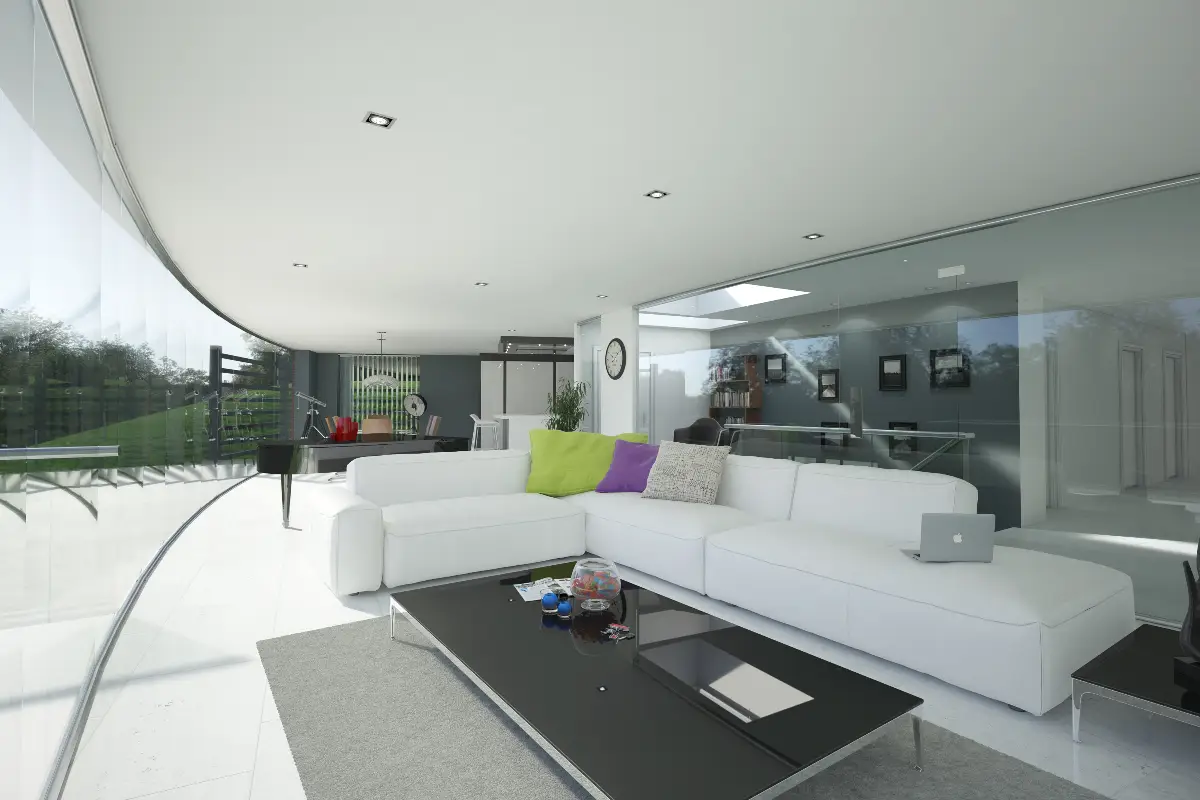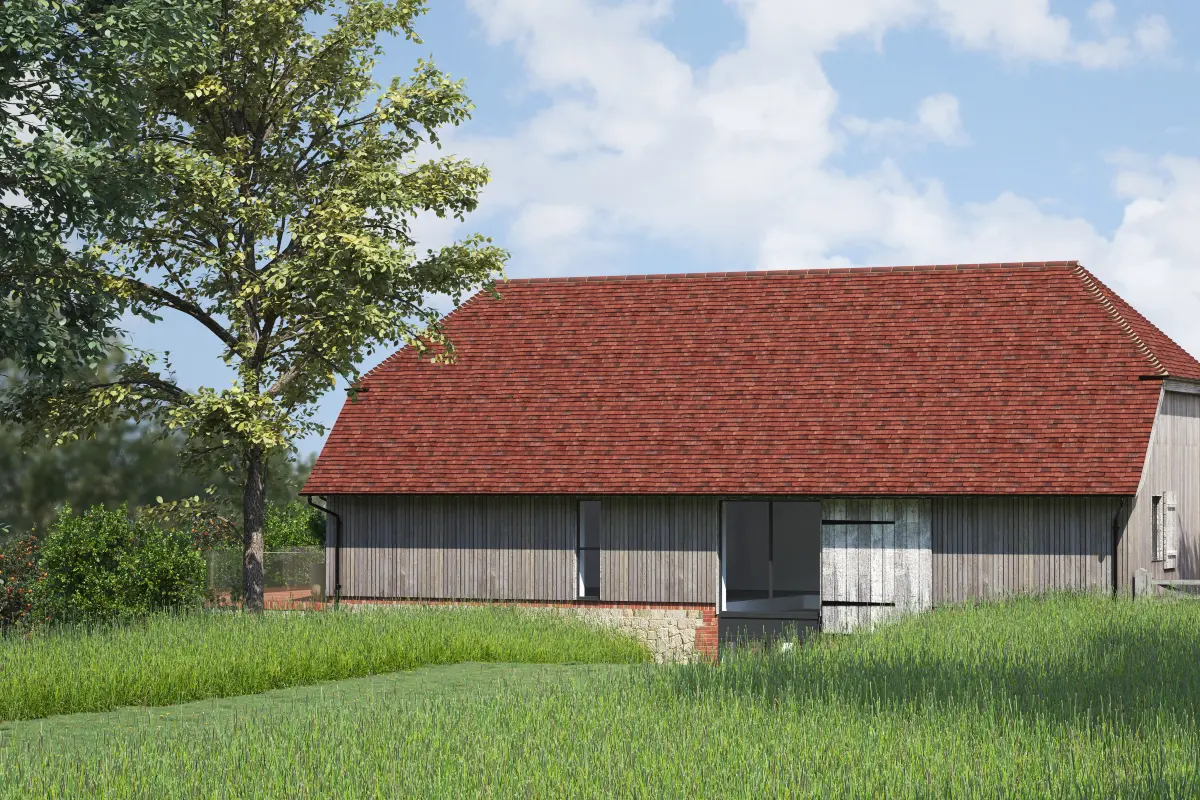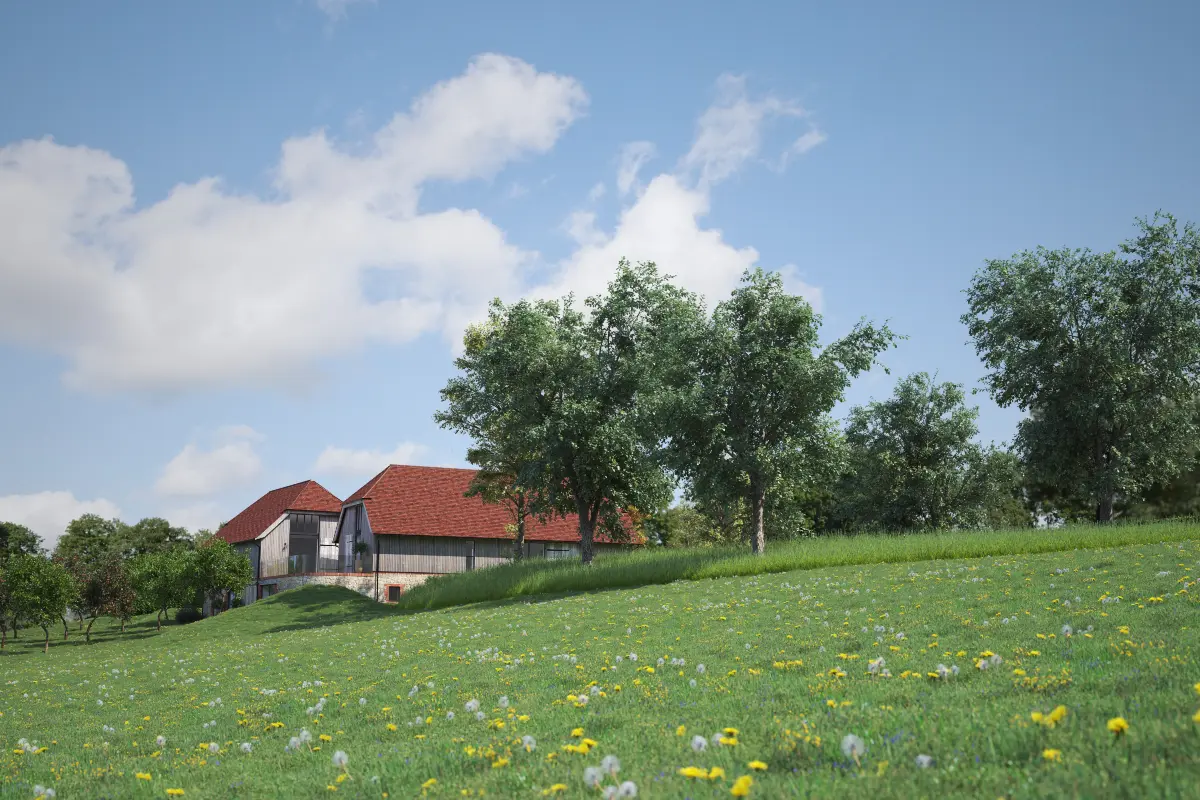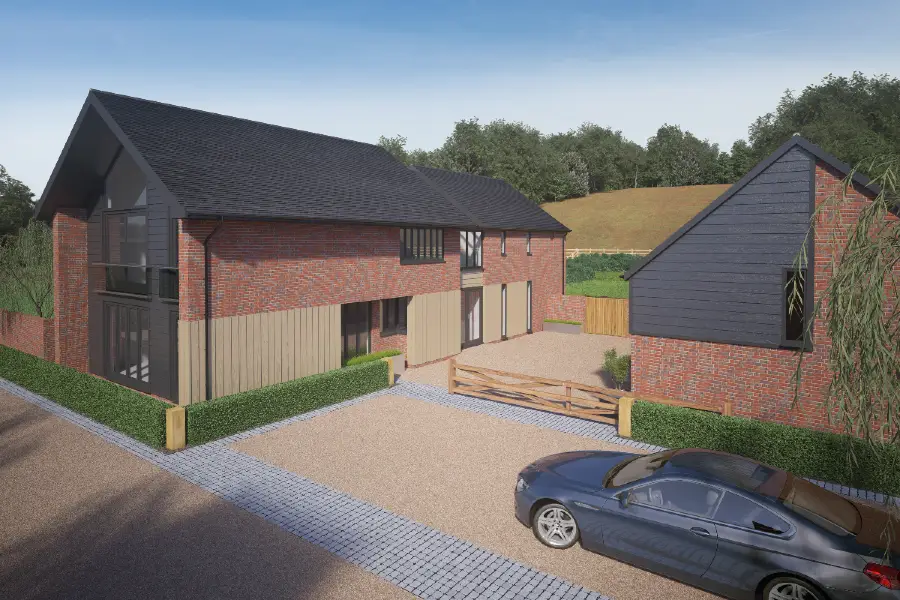Planning Achieved For A New Countryside Development In Kent
Planning permission for modern countryside development
We partnered with a long-standing client to reimagine a disused kennel site in the Kent countryside as a remarkable, one-of-a-kind rural development.
The plot is outside the settlement boundary, where national policy generally restricts new housing to protect the countryside.
Although the local authority refused a conversion scheme and the Planning Inspector later dismissed the appeal, their written comments prompted a rethink of the site’s potential.
By responding creatively to their comments and designing sensitively to the site’s topography and rural setting, we secured full planning permission for a bespoke new-build home.
Our design features two barn-style forms linked by a sunken lower-ground floor, which houses the main living spaces and opens onto a private courtyard. The result is a spacious, modern dwelling with a minimal visual footprint that blends effortlessly into its surroundings.
Caring Stud: A Sloping Plot on the Edge of a Rural Cluster
Caring Stud is located along Caring Road, just outside Maidstone, in a small cluster of homes surrounded by open countryside. The land slopes gently from west to east, opening up long views across the rural landscape.
Previously used as a canine hydrotherapy centre, the plot housed several outbuildings, including kennels and timber sheds. These structures were modest, low-lying, and in poor condition.
Engaging Taylor Roberts to Unlock a Challenging Countryside Site
While other developers might have dismissed Caring Stud due to its sensitive location, our client, iNTERESTING Developments, recognised its potential.
Having previously teamed up with us on several complex residential projects, they asked us to assess the site and explore a strategy that could deliver a modern, bespoke rural development.
The Brief: A Bespoke Home In The Countryside
The client’s goal was to maximise the site’s value by securing planning permission for a high-quality, custom-built home.
At first, they thought converting the existing buildings was the most viable route. Conversions are a practical way to gain consent in rural locations, where planning policy rarely supports countryside new builds.
However, the former hydrotherapy centre and kennels were in disrepair and lacked the quality or design value to justify retention. Moreover, the site sat in the countryside, outside a settlement boundary, so the scheme faced policy-related obstacles from the outset.
Planning Challenges
Acting on our client’s brief, we initially submitted a well-considered conversion scheme through DHA Planning. The application was refused locally and subsequently dismissed at Appeal.
While the Planning Inspector agreed that the existing buildings lacked value and were unsuitable for reuse, their written decision also noted that the site was not truly isolated, as it had established access and sat within a small cluster of homes. We took this as a hint that a sensitive new build could be acceptable.
So, we put forward a landscape-led development that would improve the site, blend with the landscape, and align with national planning policy.
The Design
To reduce visual impact and address concerns about overdevelopment, we designed the new home as two modest, barn-style volumes. From street level, the dwelling looks like a modest, single-storey dwelling, much like the original structures it replaces.
Each volume features a traditional dual-pitched gable roof - a profile commonly seen in traditional rural buildings - helping the house integrate into its surroundings.
The barns are positioned perpendicular to each other, creating a sheltered L-shaped layout that conceals family life and domestic clutter.
The courtyard faces east, towards the neighbouring cluster, while the back of the house faces the open landscape.
We took advantage of the site’s natural slope to dig a lower-ground floor into the hillside to expand the footprint. The bedrooms are at ground level, while the sunken level houses the kitchen, study, and main living areas, which have direct access to the courtyard.
The Materials
We developed a materials palette that draws on Kent’s rural vernacular while giving the building a contemporary character.
We chose plain clay tiles for the pitched roofs, referencing traditional roofing materials found throughout Kent’s farm buildings.
We introduced contrasting textures and material richness by using Kent ragstone and red multi-stock brickwork on the lower sections of the façade. For the upper sections, we opted for narrow-gauge vertical timber cladding to reinforce the height and rhythm of the barn-like forms and give the building a contemporary feel.
The result is a timeless yet bespoke look.
The Landscaping Strategy
Landscaping played a key role in making a case for development in this rural location.
We appointed specialist landscape consultants to develop a strategy that would support the planning application by demonstrating sensitivity to the site’s setting and delivering a net biodiversity gain.
The scheme includes new tree planting, reinforced hedgerows, and wildflower meadows across areas of rough pasture. These encourage wildlife and plant diversity while preserving the site’s natural openness and long views.
The Planning Application Approval Process
Building on the Planning Inspector’s comments, we worked with DHA Planning to develop a scheme that addressed key policy concerns around visual impact and sustainability.
The design’s modest above-ground appearance and landscape-led approach helped demonstrate that a new dwelling could enhance the rural setting rather than harm it.
The application was supported by a strong planning statement and a clear design rationale, so the council approved it at the local level without any requests for changes; a rare result for a new home outside a settlement boundary.
Next Steps
The site has been sold, and Taylor Roberts continue to work with the new owners to refine the design ahead of the build.
The Client’s Feedback
The client was surprised and delighted when planning permission for a new countryside development was granted, especially given the site’s location and the appeal refusal.
Our new-build strategy helped them bring forward a unique viable scheme.
Caring Stud is a truly bespoke design shaped entirely by its context: the sloping ground, the surrounding countryside, and the relationship with neighbouring homes. It’s a thoughtful, place-specific dwelling that responds to its landscape while accommodating modern living.
If you’re exploring the potential of a rural site, whether it’s outside the settlement boundary, includes existing structures, or comes with planning history, Taylor Roberts can help you assess your options and unlock its potential.
We support developers and landowners across Kent and the South East with feasibility studies, planning strategies, and bespoke architectural solutions tailored to sensitive and technically constrained sites.
From initial site review to concept design, planning applications, and beyond, we offer the strategic input and design expertise to help you confidently move your project forward.
Call us on 01227 457 545 or email us on enquiries@taylorroberts.co.uk to discuss your project.
Contact our team today for expert property advice - book now for free.





.webp)


